Fertilization is essential to effective plant care as it directly affects growth, health and yield. The use of Epsom salt, which is mainly magnesium sulfate, as a fertilization method has attracted attention for its effectiveness in promoting plant vigor. In this article, we explore the complex ways Epsom salt nourishes plants by explaining its contribution to chlorophyll production and nutrient absorption and how it assists other functions necessary for complete plant activity. Applying scientific principles behind using Epsom salt will help gardeners optimize their fertilization strategies to achieve the full potential of their plants through strong growth and better tolerance to environmental stressors.
What is Epsom Salt and How Does it Benefit Your Garden?
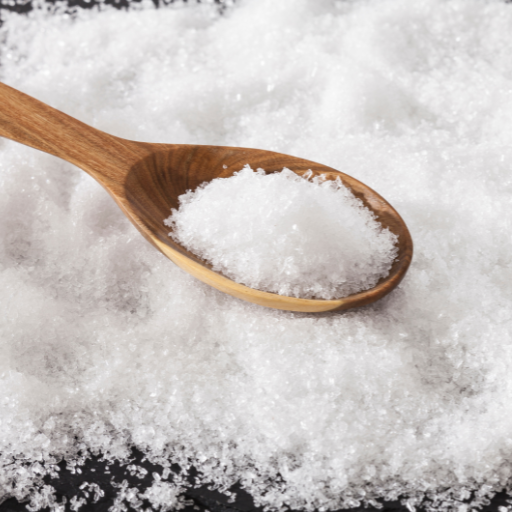
Naturally occurring mineral compound magnesium sulfate (MgSO₄), also known as Epsom salt, acts as a source of important nutrients for plants. It is highly valued for its high concentration of magnesium, which is essential in synthesizing chlorophyll, thereby enhancing photosynthesis. Besides this function, magnesium activates enzymes which are critical for different biochemical processes such as carbohydrate metabolism and nutrient absorption. Additionally, it has an added advantage because the sulphate part helps uptake key nutrients like nitrogen and phosphorous leading to overall plant health improvement. Incorporating Epsom salt into the fertilization routine improves soil quality and encourages the development of lush foliage while boosting flowering and fruiting, ultimately promoting productivity from the garden.
Why Use Epsom Salt for Plants?
These factors make use of Epsom salt on plants necessary, resulting in better plant health and increased yield. To start with, magnesium sulfate assists in chlorophyll manufacture because magnesium is a significant ingredient in chlorophyll molecules, which is quantitatively important since plants require about 0.2% to 0.5% magnesium within their tissues for optimum growth rates. Secondly, magnesium increases nutrient uptake efficiency especially by helping more phosphorus to be transferred, which is required by energy conversion and photosynthesis that positively influences plants’ growth rate.It should be noted too that there are certain symptoms associated with deficiency of magnesium but can be corrected using Epsom salt,for example interveinal chlorosis may develop when soil level falls below 50 mg /kg Mg. Additionally,the sulfate ions help improve nitrogen absorption, enhancing the formation of amino acids and thus raising protein synthesis levels, which results in stronger, healthier vegetation. Finally adding approximately one tablespoonfuls per foot tallness of plant heights into planted soils hastens speedily available sulfur/magnesium sources hence ensuring excellent general plant performance.
Understanding the Nutrient: Magnesium and Sulfur in Epsom Salt
Magnesium (Mg) is an essential macronutrient that plays a crucial role in the functional processes of plants. Especially it is critical in chlorophyll synthesis because chlorophyll not only facilitates photosynthesis but also influences how efficiently energy is transformed within a plant. The requisite concentration for magnesium in plant tissues is 0.2-0.5% and any inadequacy may lead to massive stunting during growth and development. Dropping below 50 mg/kg Mg levels within soil may cause plants to start showing signs of leaf interveinal yellowing, or chlorosis, indicating impaired photosynthesis.
Sulfur (S) another key constituent found in Epsom salt is very vital for amino acid synthesis and protein, enzyme and vitamin formation. The presence of sulfate ions increases the uptake of nitrogen, thereby promoting the biosynthetic pathway for important amino acids, which aid in general plant metabolism.The significance of this element lies in cysteine together with methionine as major precursors for protein building besides other metabolic purposes.Thus,this nutrient’s optimal concentration ranges between 0.1%-0.3%.On occasion, when limited sulfur amounts occur, then there shall be retarded growth seen as well as overall vigor reduction.
Approximately one tablespoonful per foot height should be included into soil for proper exploitation of Epsom salt benefits. This way plants will quickly gain enough Magnesium ad Sulfur which would otherwise help them grow better and withstand various strains from environmental factors
How Epsom Salt Assists Tomato Plants and Other Vegetables
Crucially, Epsom salt, mainly composed of magnesium sulfate, contributes significantly to the growth and wellness of tomato plants as well as other vegetables. The mineral magnesium takes part in chlorophyll synthesis, which is crucial for photosynthesis, thereby improving the ability of the plant to trap sunlight and utilize it, converting it to food. Moreover, magnesium facilitates the activation of various enzymes that are vital in metabolic functions, thus ensuring a robust development and fruiting stage. In contrast, sulfur provides amino acids responsible for protein synthesis that make structural integrity and vigor of a plant. As gardeners apply Epsom salts, they bridge gaps in terms of the availability of magnesium and sulfur, thus enabling stronger roots, increased yields as well as resistance against fluctuating environments. Plants, hence, become more vigorous with lush green foliage typical of healthy vegetation if used with regularity on their soils together with sound soil management techniques.
How to Apply Epsom Salt in the Garden
Determine the specific needs of your plants at different stages of growth for you to effectively apply Epsom salt in your garden. Typically, one common technique involves dissolving a tablespoonful of Epsom salt into a gallon of water, which can be used either as a foliar spray or soil drench. For leaf application, preferably early morning or late afternoon is the best time to spray the solution on the leaves so that it minimizes evaporation and increases absorption. Alternatively, soak the base of plants with dissolved Epsom salts to allow easy uptake by roots where it is easily absorbed by plants. Another way is by sprinkling dry Epsom salts onto them then lightly tilling into the soil followed by adequate watering to aid in absorption. The process should be repeated during the growing season every four to six weeks while taking note of plant responses and nutrient requirements accordingly. By monitoring properly, it will be possible to adjust both volume and periodicity of Epsom salt applications for optimum development and harvest.
Mixing Epsom Salt with Water
- MeasureEpsomSalt: Measure out how much salt you want for Epsom. This depends on individual plant needs, although generally, 1 tablespoon per gallon is mostly used.
- ChooseWaterTemperature: Choosing warm water facilitates dissolving because it causes quick dissolution compared to cold water when using this type of product.
- DissolveSalt: Pour measured amount of Epson sale into container then add warm water; stir until complete disintegration occurs so that nutrients are evenly dispersed throughout.
- TransferSprayBottle: On deciding to use foliar spray, what remains now is just transferring your mixture into a sprayer bottle so that you can use it with ease. In order for it to work properly, put a fine nozzle, which will make a cover on the leaves look misty.
- Storage: Unused solutions can be saved using a tight-fitting cap in a dark, cool place to prevent spoilage, but newly mixed ones should be used whenever possible for best results.
Recommended Epsom Salt to Water Ratios for a Gallon
In general, the recommendations on how much Epsom salt is needed per gallon of water typically range from one to two tablespoons depending upon what plants are being treated. At first, 1 tablespoon per gallon is often considered as enough amount for magnesium supplementation, especially in plants such as tomatoes, peppers, and roses that require this nutrient. However, if yellowing of leaves due to lack of magnesium occurs, it may be advisable to increase the dose up to 2 tablespoons per gallon. The proper response of plants after the initial doses must, therefore, be taken into account and adjustments made accordingly without causing any imbalance in the nutrients supplied.
Ways to Use Epsom Salt as a Foliar Spray
Using Epsom salt as a foliar spray can be made more effective by various techniques. First, apply the spray during the cooler parts of the day, ideally in the early morning or late afternoon to prevent rapid evaporation and ensure better absorption through the leaves. Second, make sure that you get adequate coverage by spraying both sides of the leaves since this will maximize nutrient uptake. Thirdly, for best results, apply every 4-6 weeks while monitoring plant health for improvement or any negative reactions. Besides, include a gentle surfactant in this mixture in order to promote more even application on leaf surfaces through adhesion and dispersion.
Tips for Using Epsom Salt Around the Base of Plants
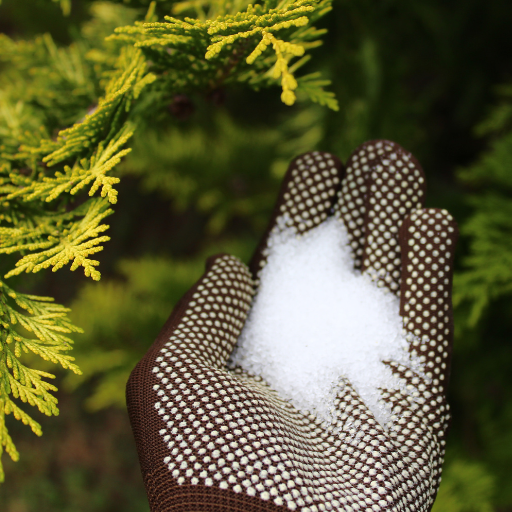
When applying Epsom salts around the base of plants, it is necessary to follow these guidelines for effective use. First, make sure you dissolve the recommended amount of Epsom salt—usually about one to two tablespoons—in water before applying them because this will prevent any possible root burn or scorching. Second, pour the mixture directly onto soil surrounding the base of a plant ensuring its entry into root zones where it is absorbed best. Third, plan to apply during growing seasons, especially before flowering and fruiting stages, so as to obtain maximum benefits from magnesium and sulfate substances. Also, avoid over-application since too much can cause nutrient imbalance in soils that could be harmful to your plants. Finally, check how moist your soil is after using this kind of salt as it works best when the watering practices are well done.
How Often Should You Add Epsom Salt for Best Results?
For most favorable results of using Epsom salts on plants it should be added every 4-6 weeks during the growing season. This period will allow for good absorption rates without risking over-saturation, which would bring about nutrient imbalance in the soil. Some gardeners may opt for putting their first round of Epsom salts at the beginning of a growth season and then waiting till critical stages like flowering or fruiting set in before giving them another dose so that they get adequate levels required by most plants at such times. Regular monitoring of plant health and soil conditions will determine whether change in frequency is called for.
Potential Issues When Overusing Epsom Salt
The excessive use of Epsom salts may have several potential implications for plant well-being and soil fertility that can lead to more harm than good. First, an excess of magnesium and sulphate might create an imbalance in the soil nutrients composition, leading to deficiencies in other essential elements like calcium or potassium, among others. For specific plants that require exact equilibrium between their essential minerals uptake and overall development, this is a serious matter indeed.
Moreover, salts may accumulate in the soil leading to high electrical conductivity (EC) levels that can interfere with water absorption and root function. Most plants have an optimal EC range of 0.5-2.0mS/cm; if this range is surpassed, osmotic stress develops whereby plants experience difficulty in accessing water from the soil even when there is enough moisture in it.
Finally, continuous addition of Epsom salt can change soil pH levels. In most cases, plant growth will be optimal in soils having pH values between slightly acidic and neutral which ranges between 6-7. However, the increase in magnesium content could raise the pH above these levels thus creating an alkaline environment that decreases nutrient availability and leads to poor plant condition.
To avoid such issues, it is important to conduct periodic soil tests for nutrients’ levels as well as pH and electrical conductivity, monitoring them always. Using these findings adjust amount of Epsom salt applied each time hence guaranteeing a balanced nutrient supply while maintaining optimum conditions for growth of plants at all times
Can Epsom Salt Be Used for Houseplants?
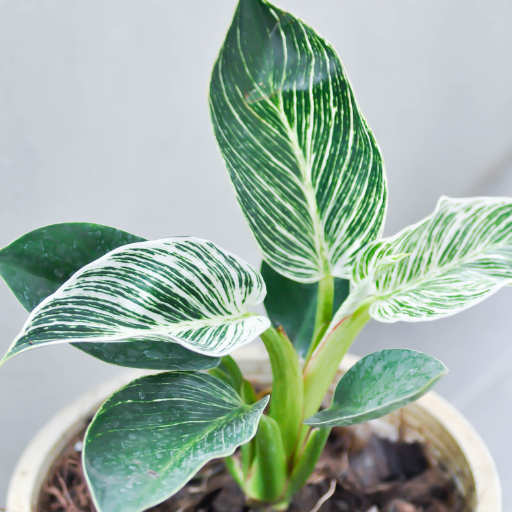
Epsom salt for houseplants is beneficial if used correctly. It has magnesium and sulphate that are essential in photosynthesis, nutrient uptake and general plant well-being. Several sources even recommend adding Epsom salt to the care regimen of plants like tomatoes, roses, spider plants or ficus to facilitate their growth and flowering. Nevertheless, it is important to exercise caution when using Epsom salts because excessive use might result in nutritional imbalances and other soil-related problems, just as is the case with outdoor gardening. A common suggestion is one tablespoonful of Epsom salts dissolved in a gallon of water applied once every month during growing period. Further regular soil testing may be recommended in order to ensure that nutrient levels are balanced thus preventing possible harm on these plants.
Benefits of Epsom Salt for Indoor Plants
Magnesium-rich Epsom salt has several benefits for indoor plants. This mineral plays a key role in photosynthesis promoting healthy growth and green foliage through chlorophyll production. Moreover, sulfate helps improve the rate of nutrient assimilation, enabling nitrogen and other vital elements to be transformed by plants more efficiently. Regular use of this product can encourage blooming in certain species, such as tomatoes or roses, so they become more productive. In addition, due to its low magnesium content, it can help prevent common deficiencies that occur, especially in acid soils, thereby enhancing overall plant health and strength against stressors. Finally, incorporating it into watering routine maintains ideal soil moisture necessary for root development.
How to Fertilize Houseplants with Epsom Salt
- Preparation of the Solution: Dissolve 1 tablespoon (approximately 14 grams) of Epsom salt in 1 gallon (approximately 3 litres)of water . The amount provided by this concentration ensures enough magnesium and sulfate without overwhelming the roots.
- Application Frequency: This solution should be administered once monthly while plants are actively growing. This prevents nutrient imbalances, which can be caused by over-fertilization.
- Direct Soil Application: Alternatively, Epsom salt can be put directly into the planting mix. A simple rule of thumb is to use one tablespoon per 5 inches pot diameter added to the top 2-3 inch soil depth. This allows continuous release of plant nutrition, hence promoting constant plant healthiness.
- Monitor Plant Reaction: After applying Epsom salts and in the following weeks monitor closely the progressed growth of these plants for changes that may occur. Some symptoms indicating inadequacy in nutrient supply include discoloured leaves or stunted flowering; thus, adjustments in dosage or frequency should be made if necessary.
Common Questions About Epsom Salt for Plant Care
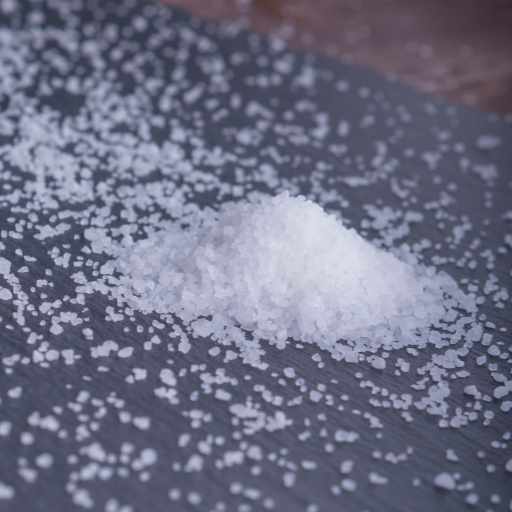
Magnesium sulfate, commonly known as Epsom salt, is often said to have a positive effect on plants. Most gardeners want to know how it helps increase plant growth and nutrient absorption. According to several horticultural experts, Epsom salt is highly beneficial to crops that need more magnesium, like tomatoes and peppers. It facilitates chlorophyll production during photosynthesis, thereby improving the life of the entire plant.
Another common question concerns about the rates of application. In general, first, adopt a conservative approach by applying the above-mentioned solution once per month during the growing season and then adjust through observation of plant responses. It’s advised experienced gardeners to test soil magnesium levels before beginning supplementation so as not to make unnecessary applications, as excessive magnesium can inhibit the absorption of other important nutrients, especially calcium and potassium.
Lastly, a lot has been asking whether or not Epsom salt can replace traditional fertilizers. Although Epsom salt enhances specific deficiencies for nutrients, it cannot be considered as a substitute for all macro-nutrients since it lacks nitrogen, phosphorus, and potassium, among others. There should always be balanced fertilization plan that ensures full availability of nutrients necessary for optimum growth of plants.
Can Epsom Salt Help with Magnesium Deficiency?
It is possible to overcome lack of magnesium in plants using Epsom salts. Chlorophyll depends heavily on magnesium because this mineral plays a crucial role in photosynthesis; hence its deficiency causes stunted growth and yellowing leaves. When applied on soils that are deficient in magnesium, Epsom salts act as an immediate source for uptake by plants, promoting healthier foliage development and better nutrient cycling, among others. Also, there are certain crops, such as tomatoes and peppers, which show positive responses when given additional magnesium, resulting in increased yield and quality improvement (Marschner B). Before applying excess amounts one should ensure that he/she does a soil test first since excessive quantities may create nutrient imbalances. Consequently, Epsom salt should be used together with a complete fertilization program as an adjunctive measure to cater for the overall nutritional requirements of the plant.
Is Epsom Salt Safe for All Types of Plants?
Most plants can use Epsom salts without much risk as long as their application is done based on the specific needs of each plant and soil condition. According to authoritative sources in horticulture, some plants, such as tomatoes, peppers, and roses, benefit from Epsom salt mainly because they require more magnesium. It’s important to apply enough, not over doing it; you are advised to dilute with water at a rate of 1-2 table spoon per gallon once a month or any time required/ during soil tests.
However, there may be certain plants, especially those adapted for low nutrient conditions, that may not require extra magnesium and be adversely affected by excess salt buildup. Similarly, if soil test results indicate that there is enough magnesium, then applying beyond this point could result in nutrient imbalances, thus affecting absorption of calcium and potassium, among others (Marschner B). Therefore, pre-application soil testing has a lot of influence on the proper use of Epsom salt, hence ensuring good plant health in the long run.
Can we use something other than Epsom salt?
When thinking about alternatives to using Epsom salt to combat magnesium deficiency in plants, there are a number of choices. Firstly, dolomite limestone is a good source as it contains both calcium and magnesium, which can be highly beneficial to soil health. Another option that’s widely used is magnesium sulfate that comes from various minerals; it can help fulfill specific magnesium requirements without any sodium found in normal salts. Additionally, organic choices such as compost, which improves soil structure and has an even nutrient composition advised for sustainable gardening practices. Lastly, foliar sprays consisting of liquid seaweed or specially formulated magnesium fertilizers can deliver a quick-fix solution by taking the nutrient directly to the plant through contact. Despite the fact that each of these alternatives may be seen as a strategic means of managing soil fertility with minimal risks that could result from excessive application of Epsom salts.
Additional Tips for Using Epsom Salt Effectively
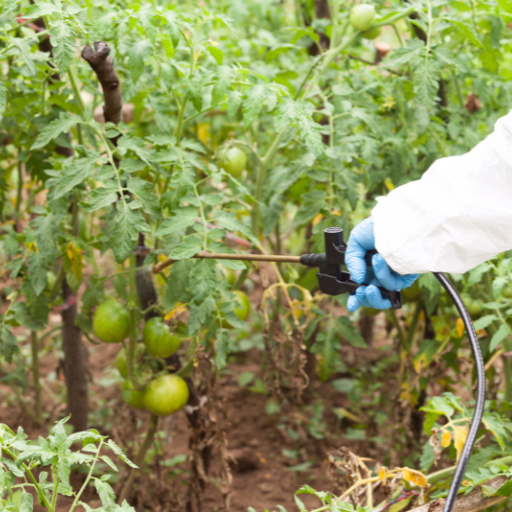
- Timing of Application: The best time to apply Epsom salt is in the growing season when plants can easily take in magnesium. Early spring, just before flowering or during active growth phases, is ideal for incorporation into the soil or as a foliar spray.
- Appropriate Dosage: Following the recommended usage is essential. For instance, one guideline recommends adding 1 to 2 tablespoons of Epsom salt per gallon of water for foliar applications or applying directly to the soil at a rate of approximately 1 cup per 100 square feet. Overuse may lead to nutrient imbalances and salt accumulation.
- Watering Matters: After using Epsom salt ensure proper watering so that it helps magnesium penetrate into root zones thereby reducing potential salinity problems. Moisture retention facilitates nutrient uptake hence preventing any negative effect on soil health.
Epsom Salt Integration with Other Fertilizers
Epsom salt integration with other fertilizers improves the efficiency of nutrient application, especially in soils lacking nutrients. When used alongside nitrogen-rich fertilizers, Epsom salt provides a source of magnesium required for chlorophyll production and overall plant health. It’s worth noting that the magnesium component found in Epsom salt could enhance the absorption levels of other nutrients, particularly nitrogen and phosphorus.
- Compatibility with Nitrogen Fertilizers: Potassium nitrate and ammonium sulfate can be effectively combined with Epsom salt. If there is enough nitrogen for optimal plant growth in a standard mix, about one tablespoonful of Epsom salt per gallon would be added to the fertilizer solution. Magnesium enhances nitrogen uptake efficiency, leading to increased growth rates and yield.
- Complementing Phosphorus Fertilizers: Root development and flowering are dependent on phosphate fertilizers which can also benefit from Epsom salt addition. Ideally, this would be in a ratio of 1:1 during mixing in order to allow phosphorus solubility without interference from magnesium. This combination enhances nutrient balance promoting flowering and fruiting stages.
- Interaction with Calcium: In the case of combining Epsom salt with calcium-rich amendments such as lime, extra care is necessary as excessive calcium could hinder magnesium absorption. It is suggested that Epsom salt be applied separately at a rate of one tablespoon per gallon of water to allow for it to be absorbed rather than competing for it when nutrients are being taken up.
In summary, when integrating Epsom salt with other fertilizers, one must pay attention to nutrient ratios and application timings so that plants can have a balanced diet without causing nutrient antagonism or deficiency.
Ways in Which Garden Growth Can Be Improved Using Epsom Salt
Epsom salt can be used differently in improving garden growth so successfully. First of all, dissolving Epsom salt in water and spraying it directly on plant foliage is widely recommended technique. The rapid absorption of magnesium is facilitated by this method, thus making it advantageous, especially for leafy vegetables and fruit-bearing plants. Secondly, putting Epsom salt into the soil before planting can increase seed germination as well as root development. A rough guideline would recommend incorporating into each planting hole about one tablespoonful of Epsom salts.Lastly, providing magnesium side dressing through the use of Epsom salt during the growing season, normally at the rate of approximately 1 tablespoon per foot height, could promote flowering and fruiting when most needed. Through these methods, gardeners can optimize essential nutrient availability, thereby having healthier and more vigorous plants grown in their gardens.
Reference sources
- Garden.org
- Source: Fertilize with Epsom Salts
- Summary: This article explains how Epsom salts can be quickly absorbed by plants when diluted with water and applied as a foliar spray, highlighting its magnesium content which is beneficial for plant growth.
- Trees.com
- Source: Tips For Using Epsom Salt In The Garden
- Summary: This source provides detailed instructions on how to mix Epsom salt with water and apply it to plant leaves, particularly advising its usage in springtime to aid new growth.
- Gardening Know How
- Source: Information About Using Epsom Salts For Plants
- Summary: This article discusses the benefits of using Epsom salt as a plant fertilizer, including improved flower blooming, enhanced green color of plants, and promoting bushier growth.
Frequently Asked Questions (FAQs)
Q: What is Epsom salt, and why is it used in gardening?
A: Epsom salt is magnesium sulfate, a chemical compound that can improve the growth and health of plants. It is commonly used in gardening as a fertilizer for plants because it supplies essential nutrients like magnesium and sulfur, which are crucial for plant development.
Q: How do I use Epsom salt to fertilize my vegetable garden?
A: To fertilize your vegetable garden, dissolve two tablespoons of Epsom salt in a gallon of water. Use this Epsom salt solution to water your plants every couple of weeks. This helps ensure that your plants receive the magnesium and sulfur they need to thrive.
Q: Can Epsom salt be used for all types of plants?
A: Epsom salt can be beneficial for many types of plants, especially peppers and tomatoes. However, it’s essential to research specific plant needs, as overuse of Epsom salt can lead to nutrient imbalances in the soil.
Q: How often should I add Epsom salt to my garden soil?
A: It is recommended to add one tablespoon of Epsom salt per foot of plant height once a month. For a more diluted approach, you can apply one cup per plant of an Epsom salt solution every two weeks during the growing season.
Q: Can I apply Epsom salt directly to plants?
A: Yes, you can directly apply one cup per plant of Epsom salt by sprinkling it around the base. However, the National Gardening Association suggests that diluting Epsom salt in water might be more effective for some plant types, as it allows for better absorption.
Q: Is Epsom salt effective against pests?
A: Epsom salt is not a direct pest deterrent, but healthier plants grown with Epsom salt might be more resistant to pests. Improved nutrition can make plants grow stronger and more resilient against common garden pests.
Q: Can using too much Epsom salt harm my plants?
A: Overuse of Epsom salt can make plants suffer from nutrient imbalances, leading to potential harm. It’s crucial to follow recommended guidelines like adding it to plants in moderation, such as one to two tablespoons per gallon of water.
Q: How can Epsom salt help pepper plants?
A: Epsom salt can help pepper plants by providing them with magnesium, which is vital for photosynthesis. By using Epsom salt in the soil or as a foliar spray, you can improve the overall health and yield of your pepper plants this summer.
Q: Are there any expert endorsements for using Epsom salt in gardening?
A: Yes, many gardeners and expert organizations like the National Gardening Association recommend using Epsom salt as a beneficial supplement for plant health. Its use has been widely endorsed due to its simplicity and effectiveness in providing essential nutrients.






